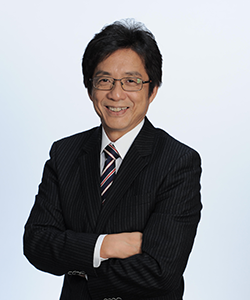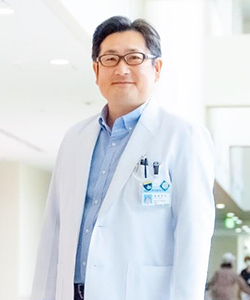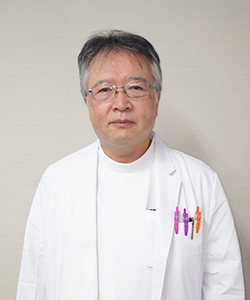Recommendations

Representative Officer of the Shorinji Kempo Group
Representative Director of SHORIJI KEMPO UNITY, General Incorporated Association
President of the World Shorinji Kempo Organization
Third-Generation Grand Master of Kongo Zen Sohonzan Shorinji
Kouma So
People who "Use Shorinji Kempo Techniques in Care" can not only push someone over, they can also stand them up.
Shorinji Kempo has certain teachings.
These involve not only exercises to strengthen the body, and methods and fighting techniques to protect yourself, but also studying hard to establish your own self, enabling you to help others and be useful to the world.
I am a practitioner of Shorinji Kempo, who aims to contribute to society by creating strong men and women in my Dojo on a day-to-day basis. I have often wondered if this practice could be directly applied in field of social welfare.
Just when I was wondering about this, I came across Professor Nezu's book.
At the time, I heard Professor Nezu say "If you can push someone over without using strength, then you should be able to stand someone up also without using strength." I was amazed to realize that the principles of Shorinji Kempo could be applied in care technology.
I asked him to assist with the compilation of our book "Using Shorinji Kempo Techniques in Care." The care technique developed by Mr. Nezu places no burden on the body, and allows care to be provided using natural physical movements, thereby reducing stress not only on the carer but also on the person being cared for.
I would like to see Mr. Nezu's care technique be adopted more and more among people who work in care and are engaged in supporting people, and among those who retain hope for their lives despite being subject to certain physical limitations.

Deputy Director, Saitama Medical University Hospital
Professor of Otorhinolaryngology
Tetsuo Ikezono
This technique is a gift from heaven for those of us who have to live within an extremely elderly society.
I first met Professor Nezu when my elderly mother became poorly and began to attend hospital regularly.
Elderly people often have concerns about ageing, pain in various places, and illnesses, and these at times are made worse by the medicines they have to take.
In cases where both the carer and the person cared for are elderly, the carer is also weakened by age, and this places a great burden of worry on all the family.
Professor Nezu's care technique, however, eliminates the burden placed on the lower back, and means that the carer can control the movement of the person they are caring for, help them stand up, and get them into bed, without excess effort.
When I first saw this, I was truly amazed to realize that the fundamental principles of Shorinji Kempo had been applied to assist extremely elderly people.
This technique has now been adopted by medical staff at Saitama Medical University, and has been properly understood and put into use within the clinical arena.
This technique is a gift from heaven for those of us who have to live within an extremely elderly society.

Saitama Medical University International Medical Center
Professor, Department of Infectious Disease and Infection Control, Director of Infection Control Section
Kotaro Mitsutake
The care technique reduces the burden on the lower back of the carer, and also offers effective infection control
This "care technique that eliminates the burden on the lower back" is something that literally did not exist until now, but which has been very much needed for the age in which we live.
Lower back pain is experienced at work as an "occupational hazard" by those working in the medical and caring fields.
As a result of this technique, carers who become aware of the three points ("push", "pull", "turn") when working bedside or using wheelchairs can significantly reduce the burden placed on their lower backs. It is vital that people use this technique.
I am also responsible for infection control within a medical facility, and I know that bacteria causing diseases are often passed by contact – both direct and indirect - between peoples' hands and bodies.
This is why we place such importance on hand sanitation. Since this technique also does not require patients to be lifted or held while moving them, direct contact is reduced.
I therefore wholeheartedly recommend this technique, which reduces the burden on the lower back, and also contributes to infection control.

Educational Corporation Saitama Medical University Senior Director, Nursing Department
Mitsuyo Muto
Those of us who have had the opportunity to learn this technique now have the responsibility to spread it not only through our hospitals, but also through other facilities and home care situations.
Nursing is a profession in which it has always been understood that back pain is normal.
Many people working within nursing experience back pain all the time, and find that they cannot work without wearing a corset – or end up with a strained back.
A lot of nurses end up leaving the profession because of the burden it places on their bodies.
There are many nurses who love their job so much that they continue to work despite the fear of back pain.
And despite the fact that many nurses have this fear, all we can say to them is "don't push yourself too hard" or "work in pairs".
I was lucky enough to learn about Professor Nezu's "Care technique that completely eliminates the burden on the lower back", and realize that the "power care" techniques we have used up until now in the nursing workplace also placed a burden on the patient.
In fact, since I was in fact implementing techniques that were completely opposite to those taught by Professor Nezu, I considered backpain an unavoidable reality. As a result, when I learned that this technique could reduce the burden on the carer and also make it easier for the person being cared for to move around, I was amazed.
In order to establish the technique within the nursing departments at Saitama Medical University, we asked Professor Nezu to give several lectures and practical instruction sessions.
Everyone who attended first thought it was unbelievable.
From the beginning to the end of the training, participants were saying "it's like scales falling from my eyes" and "I can't believe it".
Treatments and products may have been developed, but the fact is that more and more nurses are damaging their lower backs.
The long-term implementation of "Power Care" must now be replaced by the establishment of education and training programs that teach the "Care technique that eliminates the burden on the lower back", for the sake of safety and peace of mind.
Those of us who have had the opportunity to learn this technique now have the responsibility to spread it not only through our hospitals, but also through other facilities and home care situations.
We understand the importance of the "Care technique that eliminates the burden on the lower back".
I believe that it will reduce the number of people suffering lower back pain without the use of expensive equipment, and therefore recommend it.

Deputy Director, Saitama Medical University International Medical Center
Director of Medical Safety Section, Professor of Medical Safety Management
Nobutaka Kawai
This care technique not only reduces the burden on the carer, but also makes life easier and more pleasant for those cared for.
While working in medical safety management, I have experienced terrible cases in which patients who cannot move by themselves have broken their humerus.
I think that these cases are iatrogenic fractures, caused by being cared for, and it makes me feel terrible.
People's bones weaken when subjected to old age, paralysis and being long-term bedridden, so that they break easily, even if the person caring for them did not intend to apply particular strength.
Since realizing this, I have worked to educate my staff about the need to be careful when engaged in care work.
The essence of "You can do it with one arm! Care technique that eliminates the burden on the lower back", which involves not placing a burden on the lower back, not relying on your own strength, and utilizing support points, not only reduces the burden placed on the bodies of people engaged in care, but also means that those being cared for are not subjected to excessive force, and are able to change position and sit up much more easily.
In other words, implementing care based on the important support points on the body of the person being cared for reduces the need for that person to use their own strength, and allows them to be cared for with a minimum amount of stress.
It is possible to reduce the incidence of care-related injuries, without excessive intervention, from a perspective of medical safety management.
"You can do it with one arm! Care technique that eliminates the burden on the lower back". The technique introduced in this book not only reduces the burden on the carer, but also makes life more comfortable for the person doing the caring.
I would like to ask everyone to use this technique in order to provide safe, reassuring care.

Professor of Orthopedic and Spinal Surgery, Saitama Medical University
Tetsuya Torio
Only education and enlightenment required – not investment. I recommended the technique because I realized that everyone should learn it.
Lower back pain is the cause cited in 60% of cases where people are absent from work for 4 days or more – it could be described as the national work injury. Cases of lower back pain are rising significantly particularly in the medical and care workplaces.
A survey of cases of back pain occurring during care work found that around a third of cases occur during the movement of a patient, particularly when moving them from bed to a wheelchair, or helping the patient take a bath.
Increasingly, other countries are introducing laws to ensure "no-lift policies" during caregiving work, meaning that carers are no longer permitted to lift or carry the people they care for, and have to use automatic lifts and other assistive technologies.
There is some support for such a policy in Japan too, but it has not yet been fully established.
The "care technique that eliminates the burden on the lower back" means that there is no need to depend on expensive assistive technology, and, amazingly, allows carers to solve the above problems with human technique alone.
Of course, it requires no further expense – merely education.
Conventionally, the concept of "lifting" in care work has been problematic both for caregivers and those being cared for. This technique, however, removes the burden occurring during "lifting" for both parties, based on changing both position and the point supported, and will undoubtedly be useful not only in hospitals and social welfare facilities, but also for elderly people caring for other elderly people. I believe that everyone should learn it, and recommend that they do.

Professor of General Clinical Internal Medicine (Regional Medicine), Saitama Medical University International Medical Center
Assistant Director, Saitama Medical Welfare Association Social Welfare Corporation Maruki Kinen Welfare Medical Center, Manager, HAPPINESS Clinic
Minoru Saiki
It is no exaggeration to say that this technique provides a "care revolution" that realizes the desire of those to live out their lives at home, and that of those who wish to facilitate this.
The fact is that in home-based care, the main caregiver is often a member of the family, who is not actually a specialist in either medicine or care.
Even in hospitals and other facilities, caregivers are often required to implement "power care", which requires holding and lifting with the lower back as the support point, and even professionals find that their bodies are subject to physical burdens while at work.
When care is being given at home, the carer is unused to the work required, and this places an unreasonable burden on their bodies. Often, this results in the person being cared for being hospitalized because the carer cannot cope.
It is not excessive to say that the "care technique that eliminates the burden on the lower back" is a revolutionary technique that allows those who wish to live in their own homes as long as possible, and those who want to facilitate this, the opportunity to make that a reality.
I am convinced that this method, spurred on by the efforts of Saitama Medical University and its commitment to becoming a medical university that promotes regional care, can provide a solution to the many issues involved with care of the extremely elderly. We in Saitama can create an ideal model for medical care and welfare, and through our efforts, ensure that no-one becomes a "care refugee."

